At our current rate of soil loss, there are are just 60 years left until we run out. This was the stark opening line at New Generation Agriculture’s one-day soil health seminar held in Co Meath this week.
The seminar was delivered by Graeme Sait, author and CEO and co-founder of Nutri-Tech Solutions, which has a wealth of experience in regenerative agriculture.
Humus
Humus is the sweet-smelling, chocolate-coloured substance produced by micro-organisms, which is found in the top horizon of soil and is rich in organic matter. Humus contains many nutrients that are crucial for the health of soil.
Humus is also crucial for building soil carbon levels. Just a 1% increase in humus levels in US soils would remove 4.5 billion tonnes of carbon from the atmosphere.
Graeme explained that we have now lost around two-thirds of our soil humus as a result of modern agriculture. Reversing this trend will become an increasing objective in agriculture.
Graeme shared his top 10 tips for building organic levels in soils:
1 Don’t burn down your cover crop
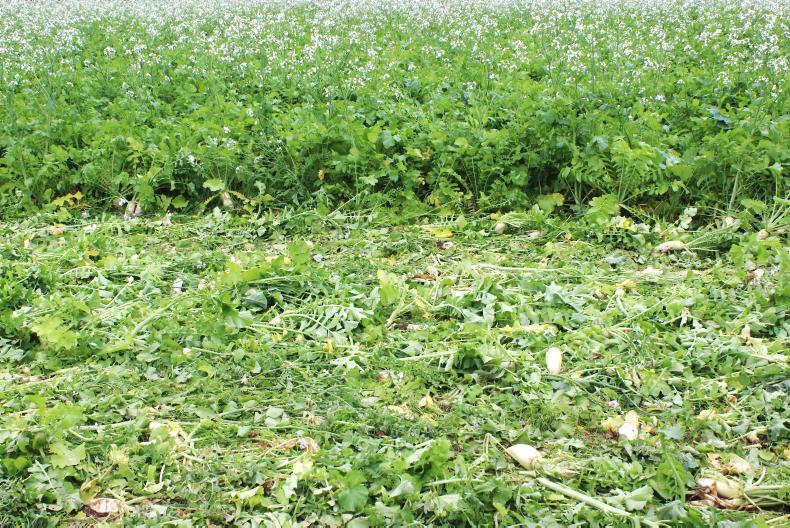
Direct drills can sow directly into a standing cover crop.
Graeme explained that in order to harness the real benefits of the cover crops, they should not be burned off with herbicide before drilling the following crop.
Burning off established cover crops results in the loss of the three key nutrients that can become gasses. These are carbon, nitrogen and sulphur.
Instead, Graeme advocates to move to a minimum tillage strategy and incorporate cover crops into the soil A horizon (the top few inches of the soil).
2 Include legumes in every pasture and under every cereal crop
He encourages the use of legumes like clover as a combi-crop in order to feed soil fungi. Fungi are crucial in generating larger soil aggregates which create crumb structure (important for infiltration and gas exchange).
Clovers sown under cereal crops also deliver nitrogen and they release acid exudates, which prize apart calcium and phosphorus (the two most important minerals required for photosynthesises).
3 Plant cocktail cover crops
Graeme also encourages the use of cover crop mixes consisting of five plant families.
He explains that we now understand that a combination of five plant families in a cover crop mix promotes the release of phenolic compounds into the soil. These antioxidants are beneficial to soil life.

Cover crop root diversity is key.
The five plant families to include in the mix include grasses, cereals, brassicas, legumes and chenopods (annual or perennial herbs, shrubs, etc).
Chenopods and brassicas should only make up 1% to 5% of the blend, as they release chemicals which are negative to friendly fungi.
4 Discover humates
He explains that humic acid is the one of the most powerful promoters of humus-building fungi which are missing in many soils. These humates are a large driver of microbial feed.
Humates also promote the development of crumb structure in soils, which can help reclaim the humus building apparatus of soils.
5 Embrace compost
Compost is immeasurably important, Graeme remarked. Compost provides vast diversity and numbers of beneficial organisms which are important to help reclaim the humus-building capacity of soils.
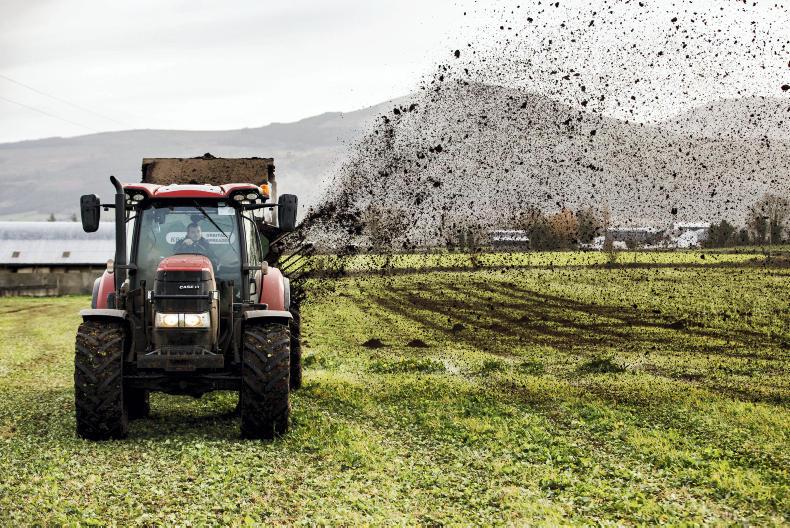
He estimates that there can be up to five billion organisms in a teaspoon of compost, with over 30,000 different species.
When applied on to soils at generous rates (20t/ac-plus), compost can help build organic matter and increase soil carbon levels.
6 Minimising tillage
Aiming to minimise tillage is a well-accepted practice to help increase soil health.
“Fungi do not favour the intrusion of cold steel; in fact, tillage can slice and dice your beneficial fungi,” said Graeme.
Every time we open our soils, we oxidise carbon. This effect is quadrupled if conditions are wet, he explained.
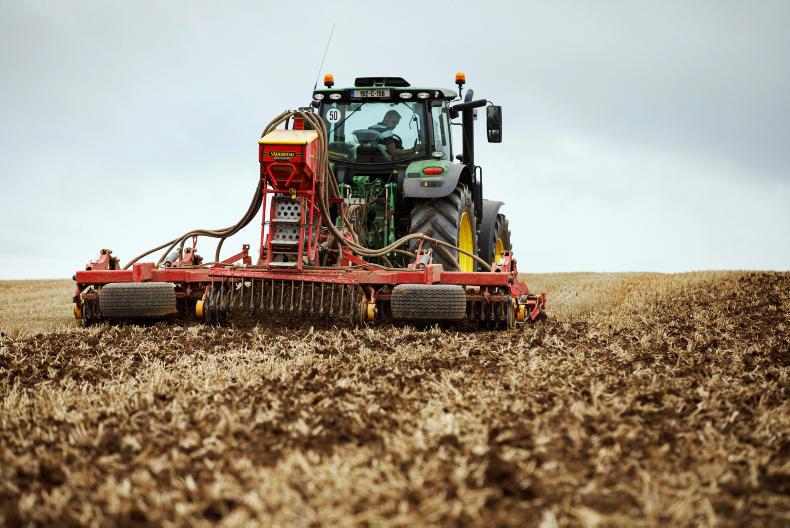
Minimum tillage has many benefits to improving soil heath.
The major issue with no-till farming is that it involves glyphosate, which he explains will likely be banned in the near future due to claimed negative health implications.
He believes that roller crimpers, cover crops and many other alternatives farming methods will replace the need for the active.
7 Bring back your earthworms
Earthworm numbers are down in most regions and there is a price to pay for this. Earthworms are crucial for soil health for a number of reasons. Earthworms create humus four times more rapidly than standard decomposition.
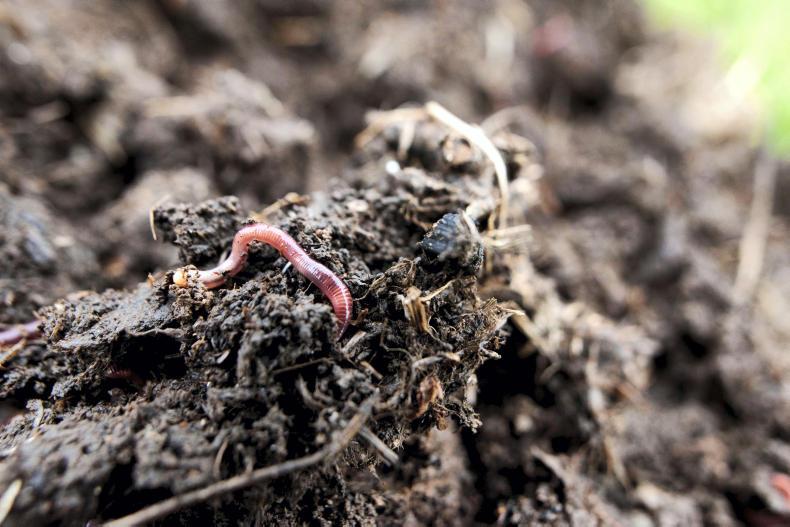
Earthworms are important workers in soil.
They also produce natural fertiliser such as potassium, nitrogen, phosphorus, magnesium and calcium, to name a few. They also incubate a unique group of organisms which are uniquely beneficial for soil.
In healthy soils, aim for 25 earth worms per shovel full. This will provide 300t of earthworm castings per ha annually.
8 Incorporate livestock

One of the most productive farming areas in the world throughout history was the vast grazing planes in the US.
Graeme explains that well-managed pasture grazing (never grazing below 10cm) is a powerful humus building strategy.
9 Enhance stubble digestion
In a healthy living soil, residues should be fully decomposed within six weeks.
If this is not happening, then you can apply inoculums on to stubble to help speed up the breakdown of these residues and promote humus formation.
10 Provide oxygen for your humus builders
Oxygen is a crucial element for soil mircobes. Building soil aggregates through inter-planting legumes and increasing fungi populations will help improve soil structure and, hence, improve oxygen infiltration into soils.
New Generation Agriculture specialises in distributing products and advice aimed at improving soil and plant health. These include a range of foliar plant and soil feeds, humates and microbial products, as well as nutritional feed additives for animals.
Read more
Soil health and your wealth seminar takes place next week
From the tramlines weather review
At our current rate of soil loss, there are are just 60 years left until we run out. This was the stark opening line at New Generation Agriculture’s one-day soil health seminar held in Co Meath this week.
The seminar was delivered by Graeme Sait, author and CEO and co-founder of Nutri-Tech Solutions, which has a wealth of experience in regenerative agriculture.
Humus
Humus is the sweet-smelling, chocolate-coloured substance produced by micro-organisms, which is found in the top horizon of soil and is rich in organic matter. Humus contains many nutrients that are crucial for the health of soil.
Humus is also crucial for building soil carbon levels. Just a 1% increase in humus levels in US soils would remove 4.5 billion tonnes of carbon from the atmosphere.
Graeme explained that we have now lost around two-thirds of our soil humus as a result of modern agriculture. Reversing this trend will become an increasing objective in agriculture.
Graeme shared his top 10 tips for building organic levels in soils:
1 Don’t burn down your cover crop

Direct drills can sow directly into a standing cover crop.
Graeme explained that in order to harness the real benefits of the cover crops, they should not be burned off with herbicide before drilling the following crop.
Burning off established cover crops results in the loss of the three key nutrients that can become gasses. These are carbon, nitrogen and sulphur.
Instead, Graeme advocates to move to a minimum tillage strategy and incorporate cover crops into the soil A horizon (the top few inches of the soil).
2 Include legumes in every pasture and under every cereal crop
He encourages the use of legumes like clover as a combi-crop in order to feed soil fungi. Fungi are crucial in generating larger soil aggregates which create crumb structure (important for infiltration and gas exchange).
Clovers sown under cereal crops also deliver nitrogen and they release acid exudates, which prize apart calcium and phosphorus (the two most important minerals required for photosynthesises).
3 Plant cocktail cover crops
Graeme also encourages the use of cover crop mixes consisting of five plant families.
He explains that we now understand that a combination of five plant families in a cover crop mix promotes the release of phenolic compounds into the soil. These antioxidants are beneficial to soil life.

Cover crop root diversity is key.
The five plant families to include in the mix include grasses, cereals, brassicas, legumes and chenopods (annual or perennial herbs, shrubs, etc).
Chenopods and brassicas should only make up 1% to 5% of the blend, as they release chemicals which are negative to friendly fungi.
4 Discover humates
He explains that humic acid is the one of the most powerful promoters of humus-building fungi which are missing in many soils. These humates are a large driver of microbial feed.
Humates also promote the development of crumb structure in soils, which can help reclaim the humus building apparatus of soils.
5 Embrace compost
Compost is immeasurably important, Graeme remarked. Compost provides vast diversity and numbers of beneficial organisms which are important to help reclaim the humus-building capacity of soils.

He estimates that there can be up to five billion organisms in a teaspoon of compost, with over 30,000 different species.
When applied on to soils at generous rates (20t/ac-plus), compost can help build organic matter and increase soil carbon levels.
6 Minimising tillage
Aiming to minimise tillage is a well-accepted practice to help increase soil health.
“Fungi do not favour the intrusion of cold steel; in fact, tillage can slice and dice your beneficial fungi,” said Graeme.
Every time we open our soils, we oxidise carbon. This effect is quadrupled if conditions are wet, he explained.

Minimum tillage has many benefits to improving soil heath.
The major issue with no-till farming is that it involves glyphosate, which he explains will likely be banned in the near future due to claimed negative health implications.
He believes that roller crimpers, cover crops and many other alternatives farming methods will replace the need for the active.
7 Bring back your earthworms
Earthworm numbers are down in most regions and there is a price to pay for this. Earthworms are crucial for soil health for a number of reasons. Earthworms create humus four times more rapidly than standard decomposition.

Earthworms are important workers in soil.
They also produce natural fertiliser such as potassium, nitrogen, phosphorus, magnesium and calcium, to name a few. They also incubate a unique group of organisms which are uniquely beneficial for soil.
In healthy soils, aim for 25 earth worms per shovel full. This will provide 300t of earthworm castings per ha annually.
8 Incorporate livestock

One of the most productive farming areas in the world throughout history was the vast grazing planes in the US.
Graeme explains that well-managed pasture grazing (never grazing below 10cm) is a powerful humus building strategy.
9 Enhance stubble digestion
In a healthy living soil, residues should be fully decomposed within six weeks.
If this is not happening, then you can apply inoculums on to stubble to help speed up the breakdown of these residues and promote humus formation.
10 Provide oxygen for your humus builders
Oxygen is a crucial element for soil mircobes. Building soil aggregates through inter-planting legumes and increasing fungi populations will help improve soil structure and, hence, improve oxygen infiltration into soils.
New Generation Agriculture specialises in distributing products and advice aimed at improving soil and plant health. These include a range of foliar plant and soil feeds, humates and microbial products, as well as nutritional feed additives for animals.
Read more
Soil health and your wealth seminar takes place next week
From the tramlines weather review










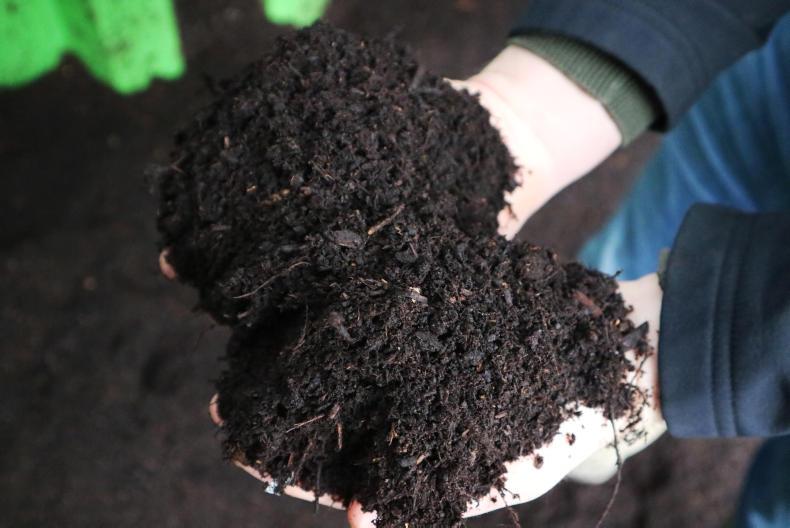




SHARING OPTIONS